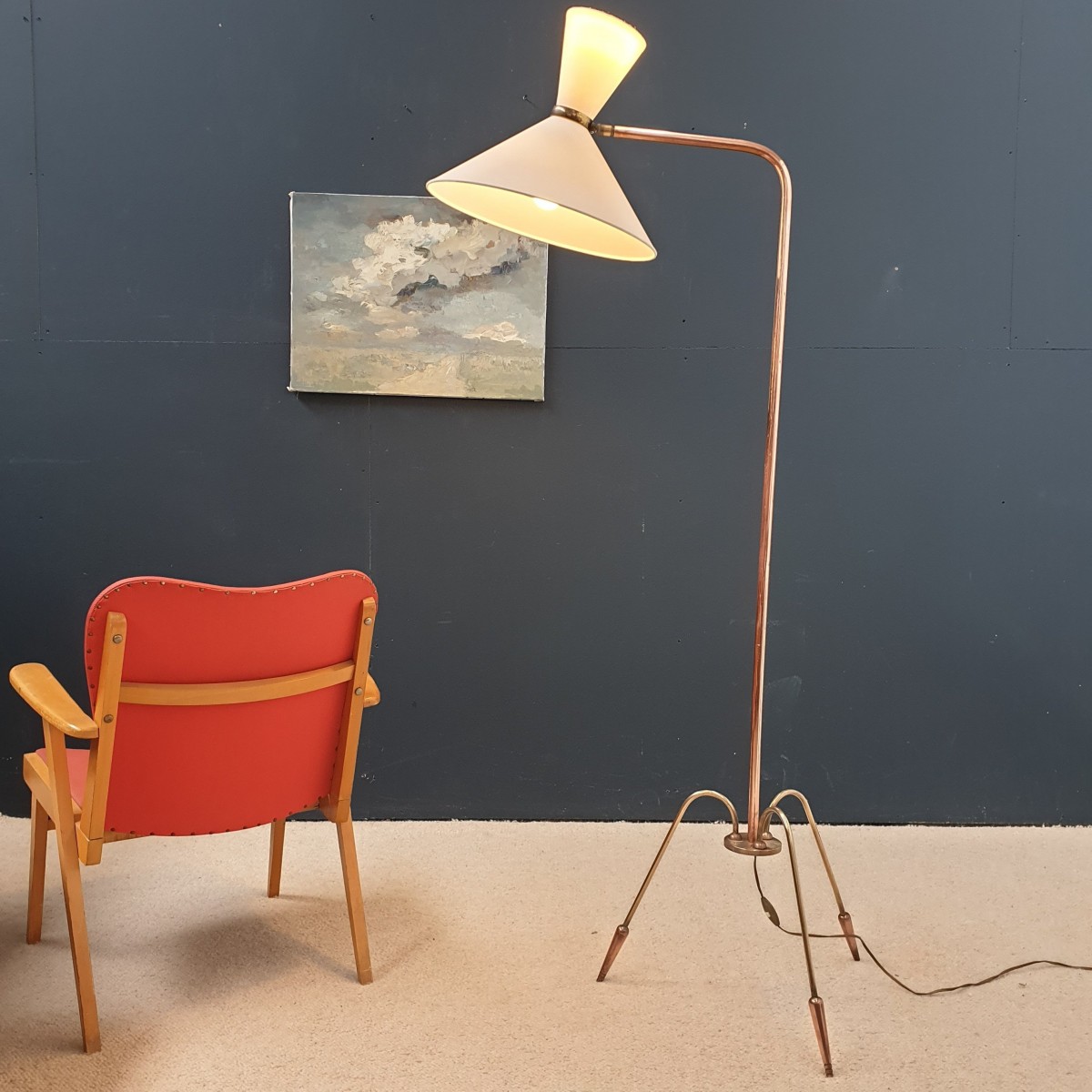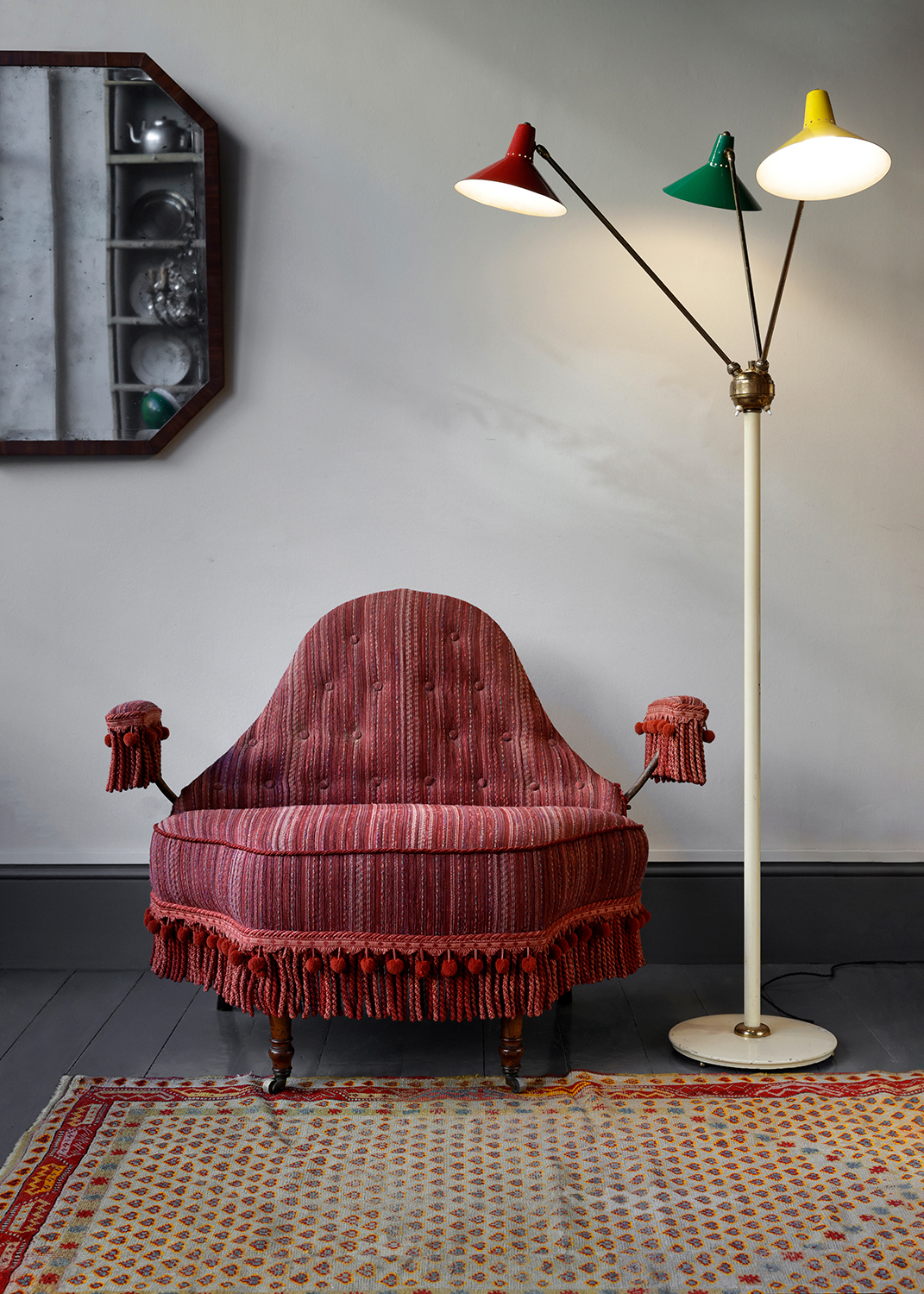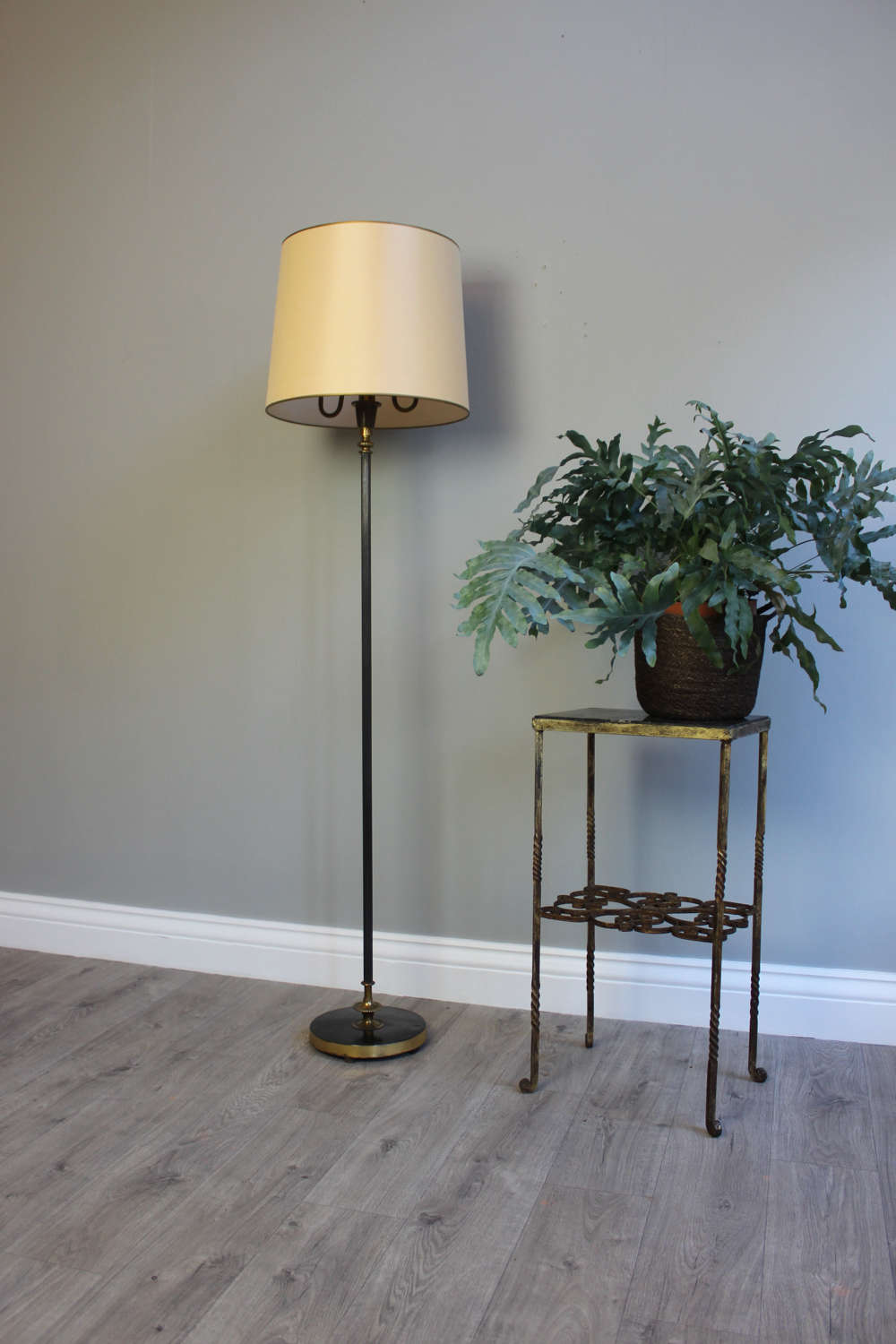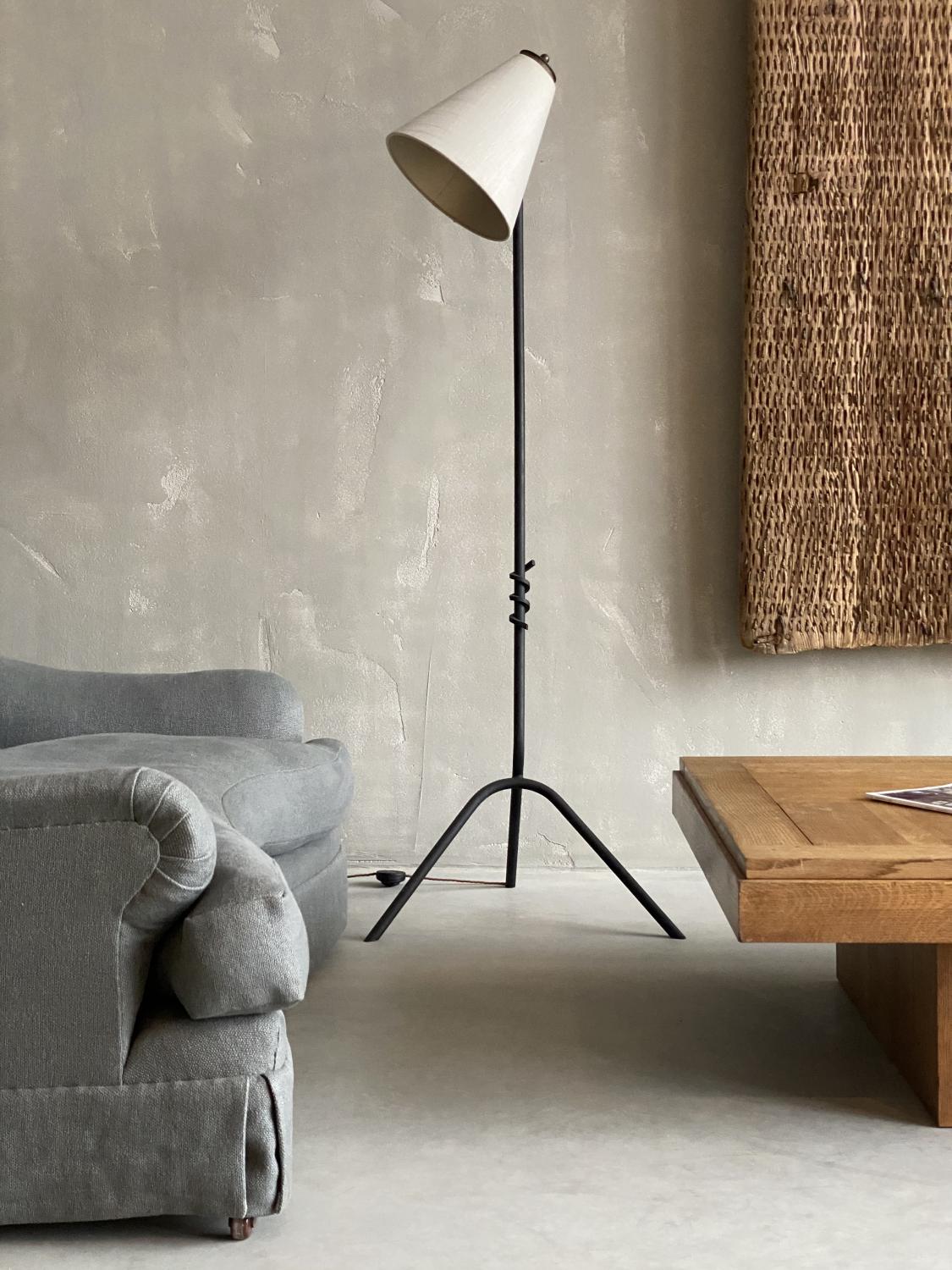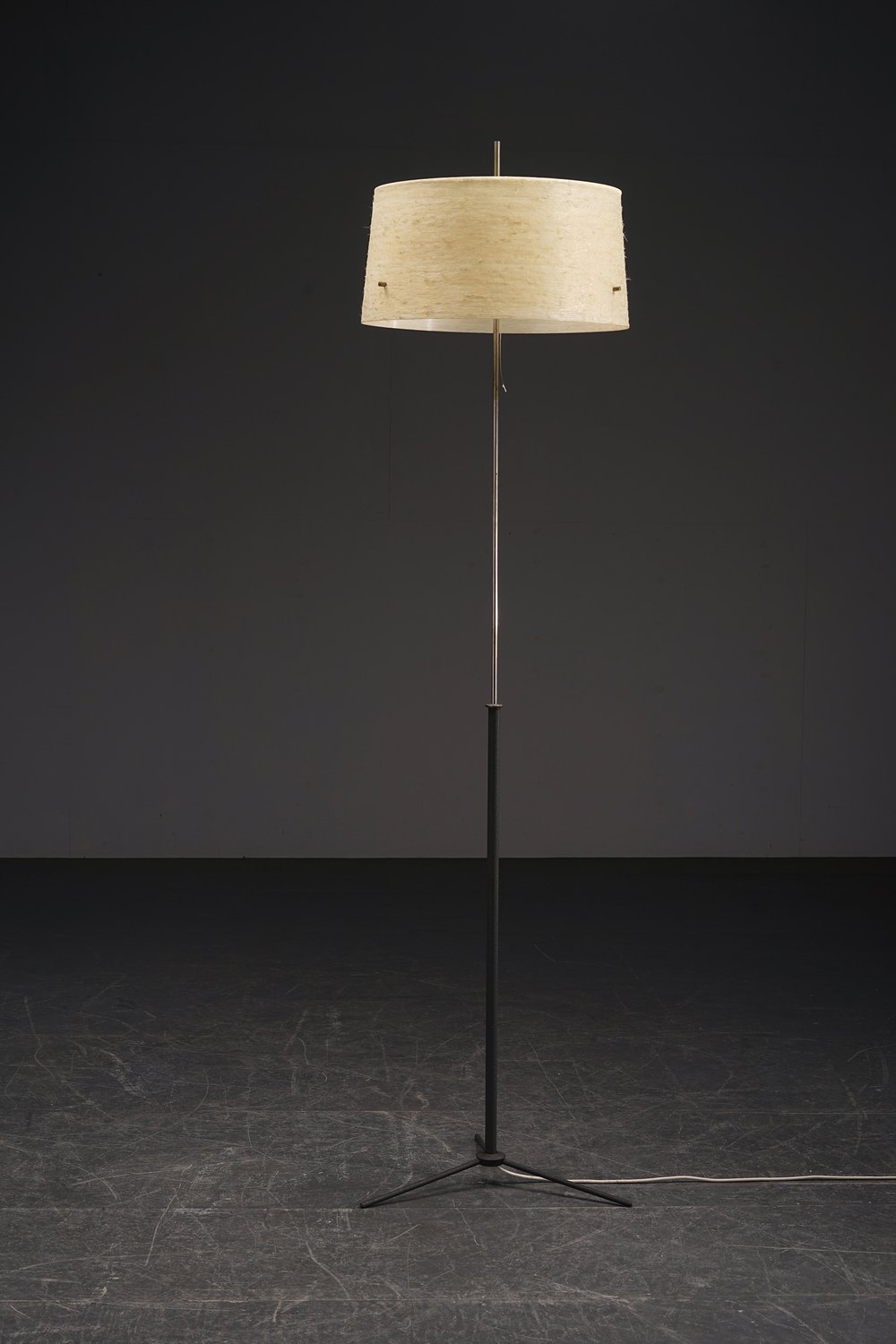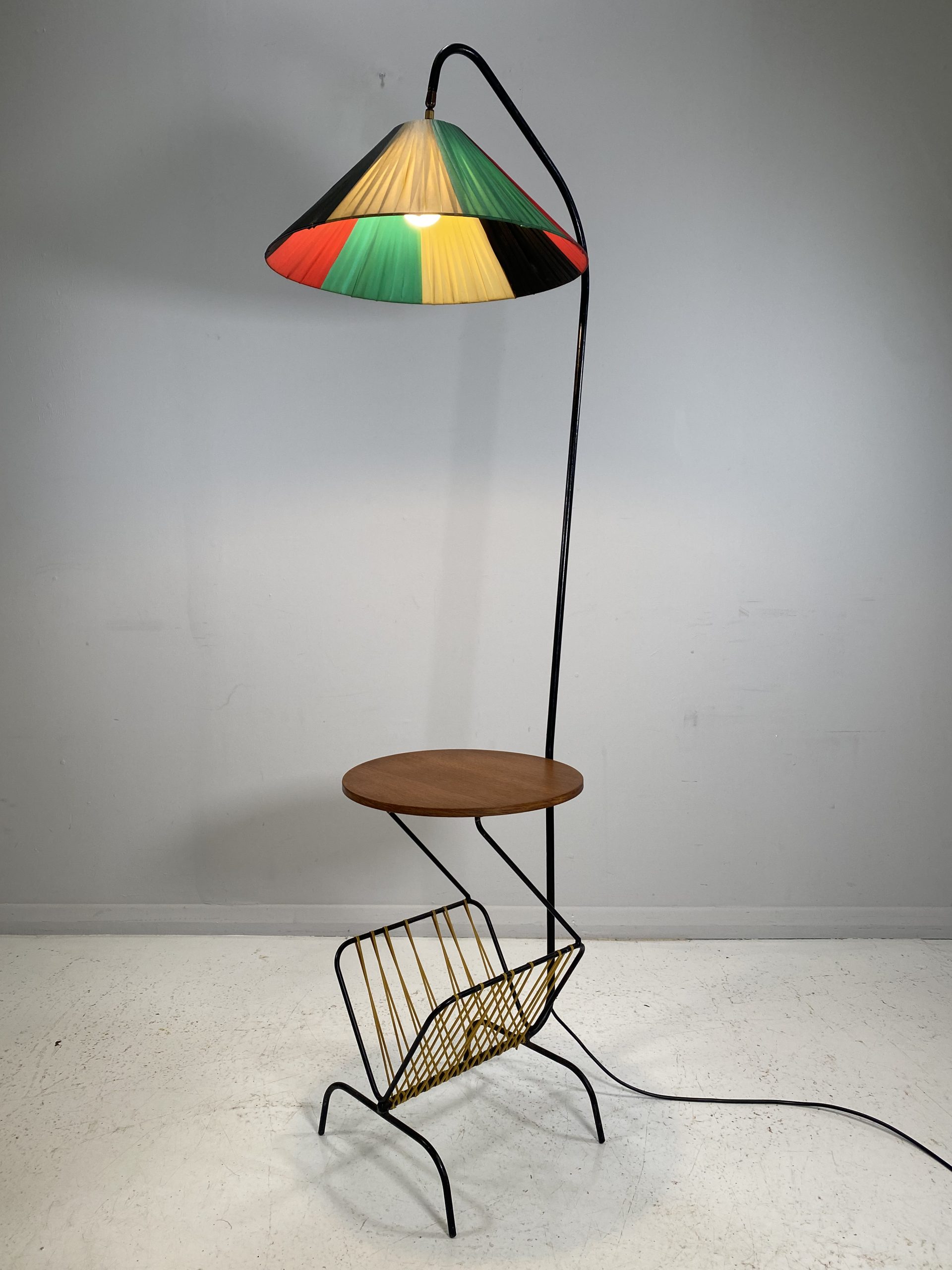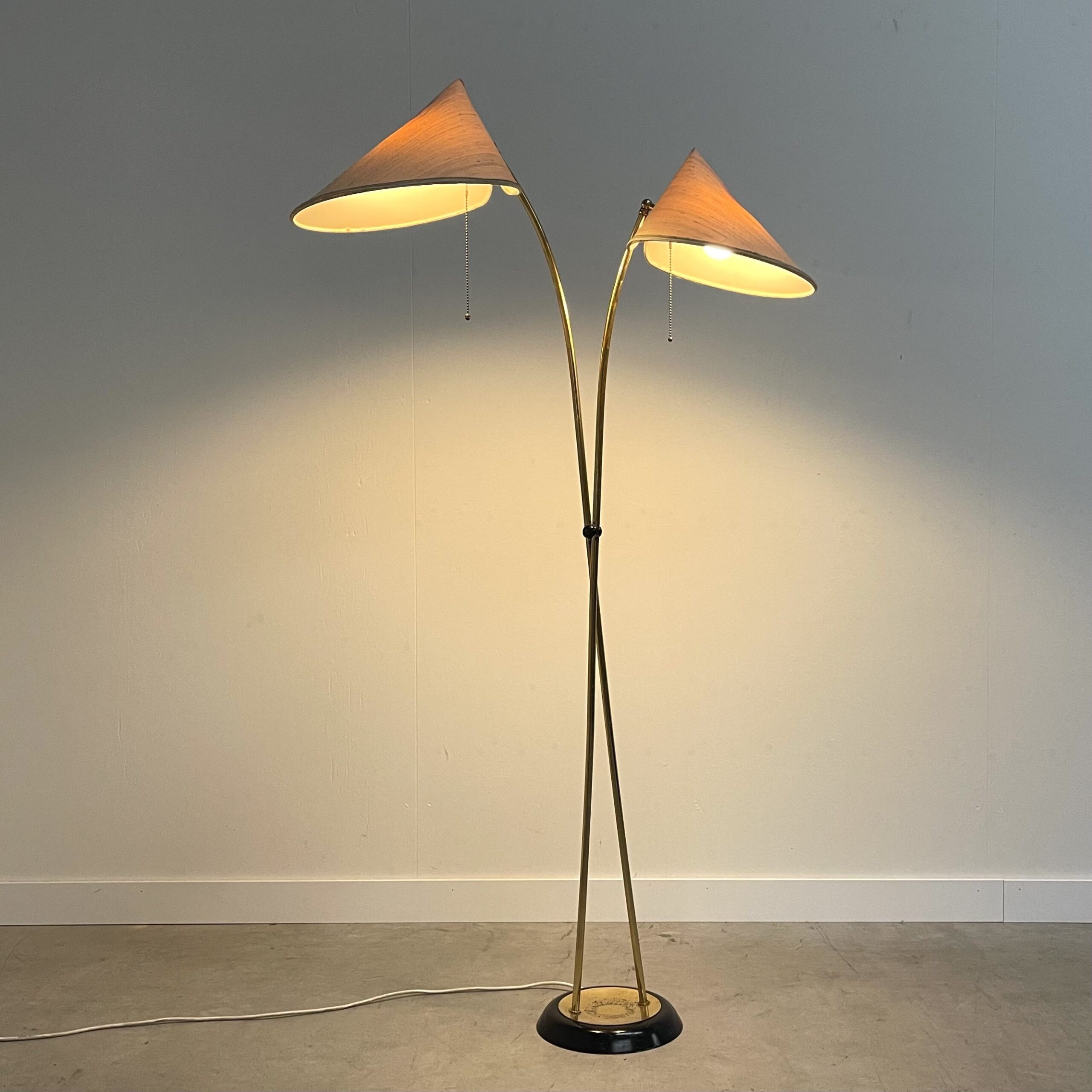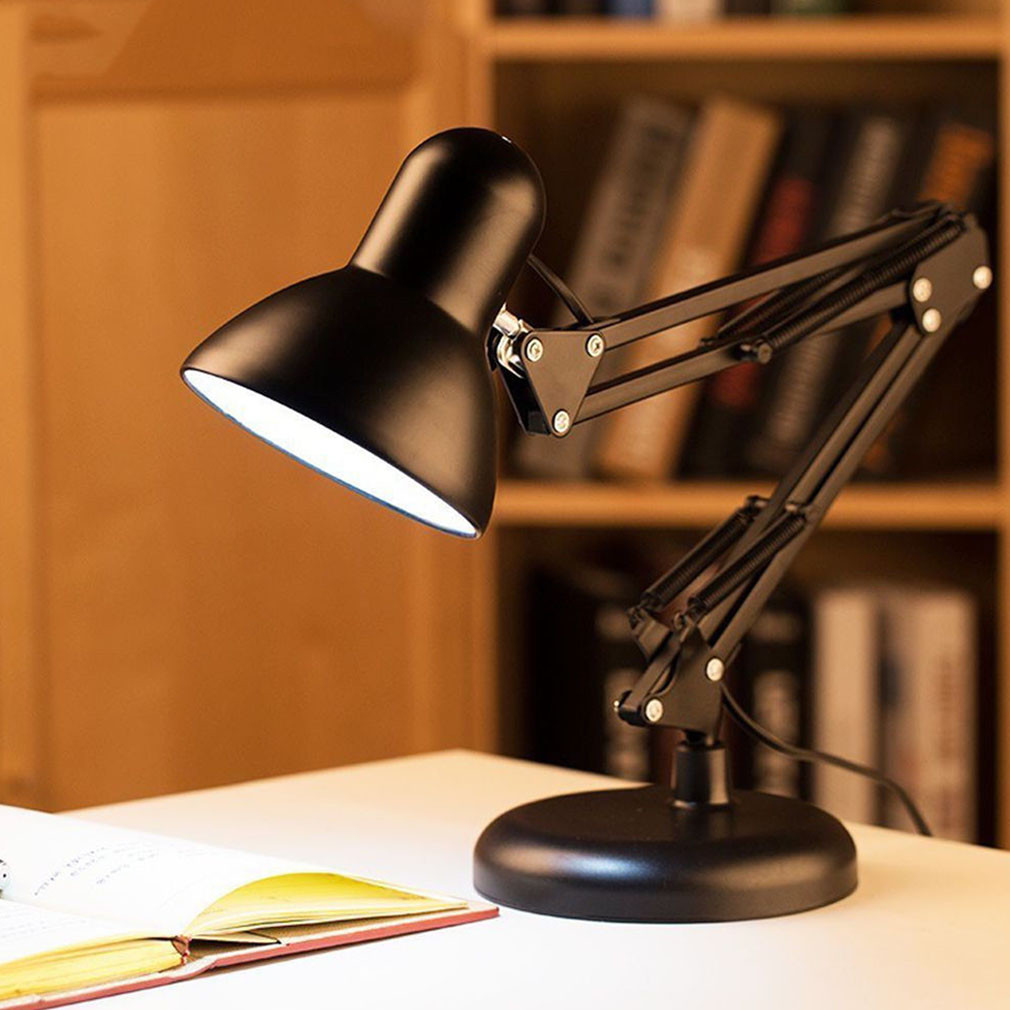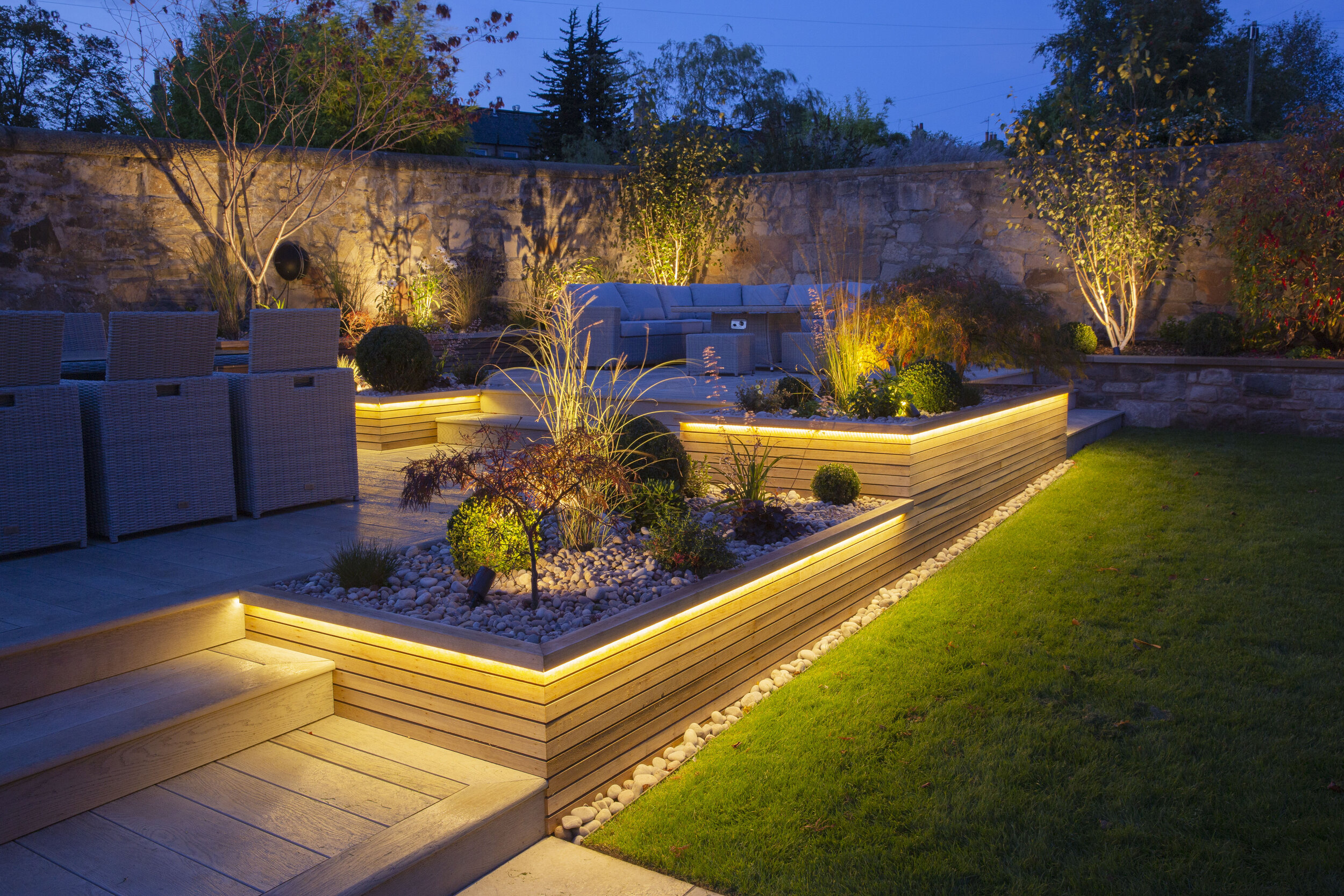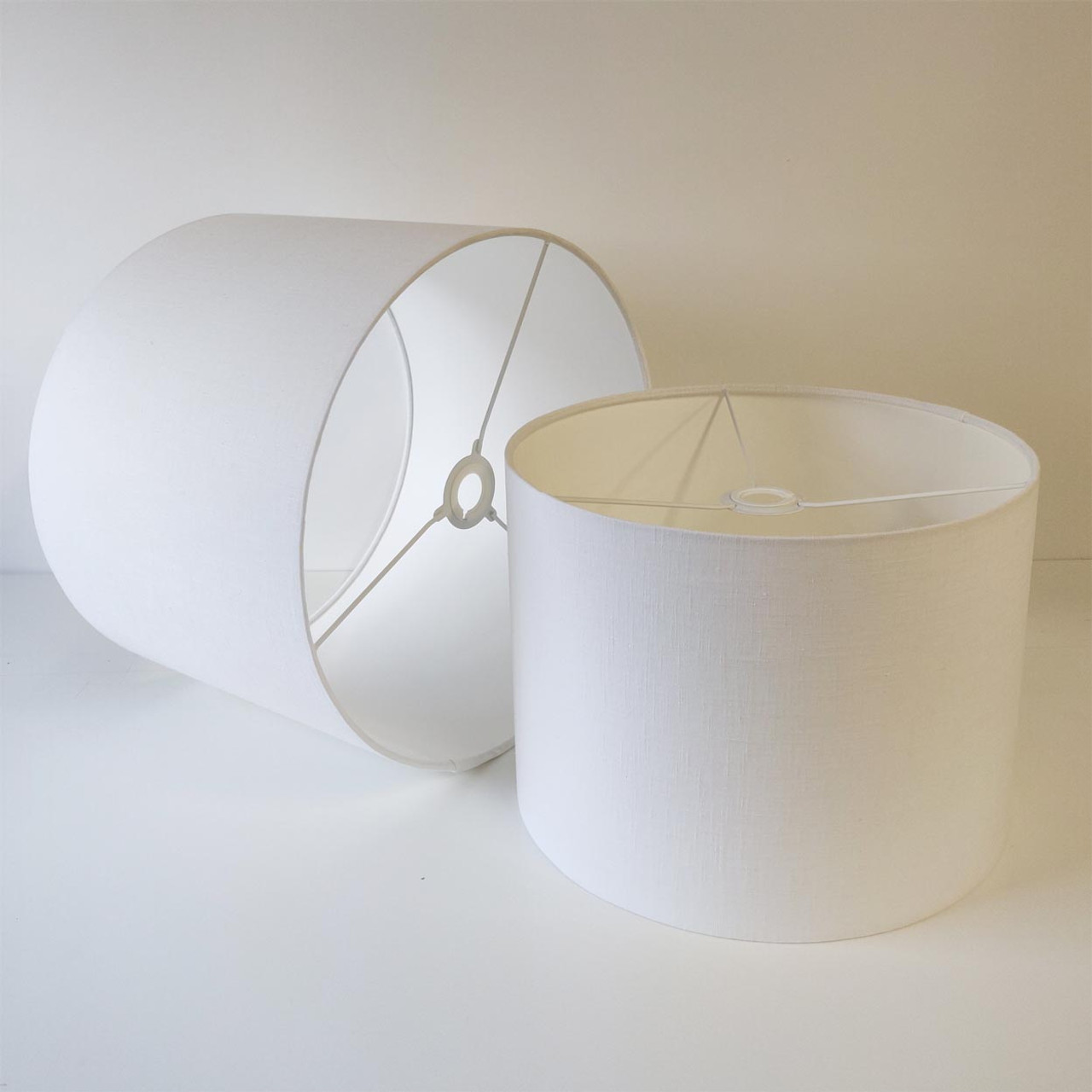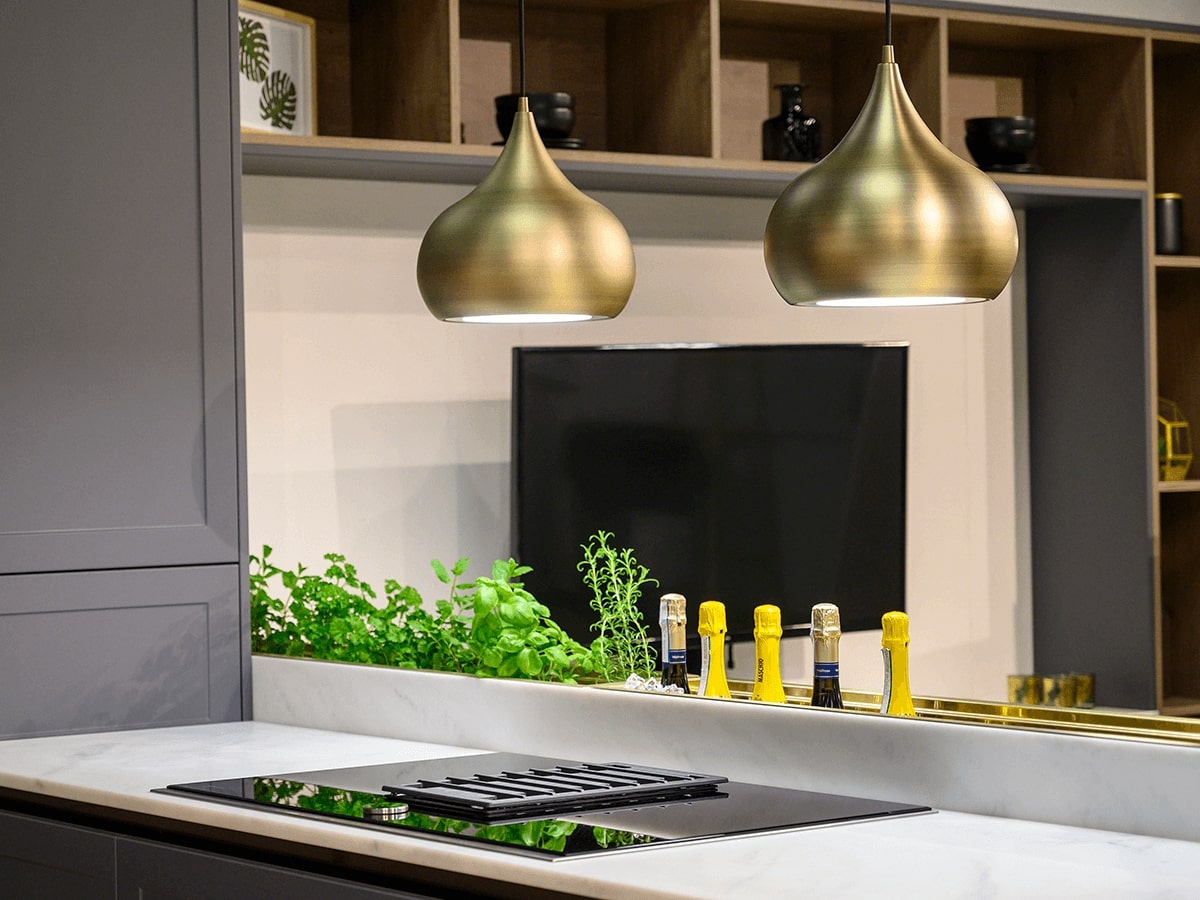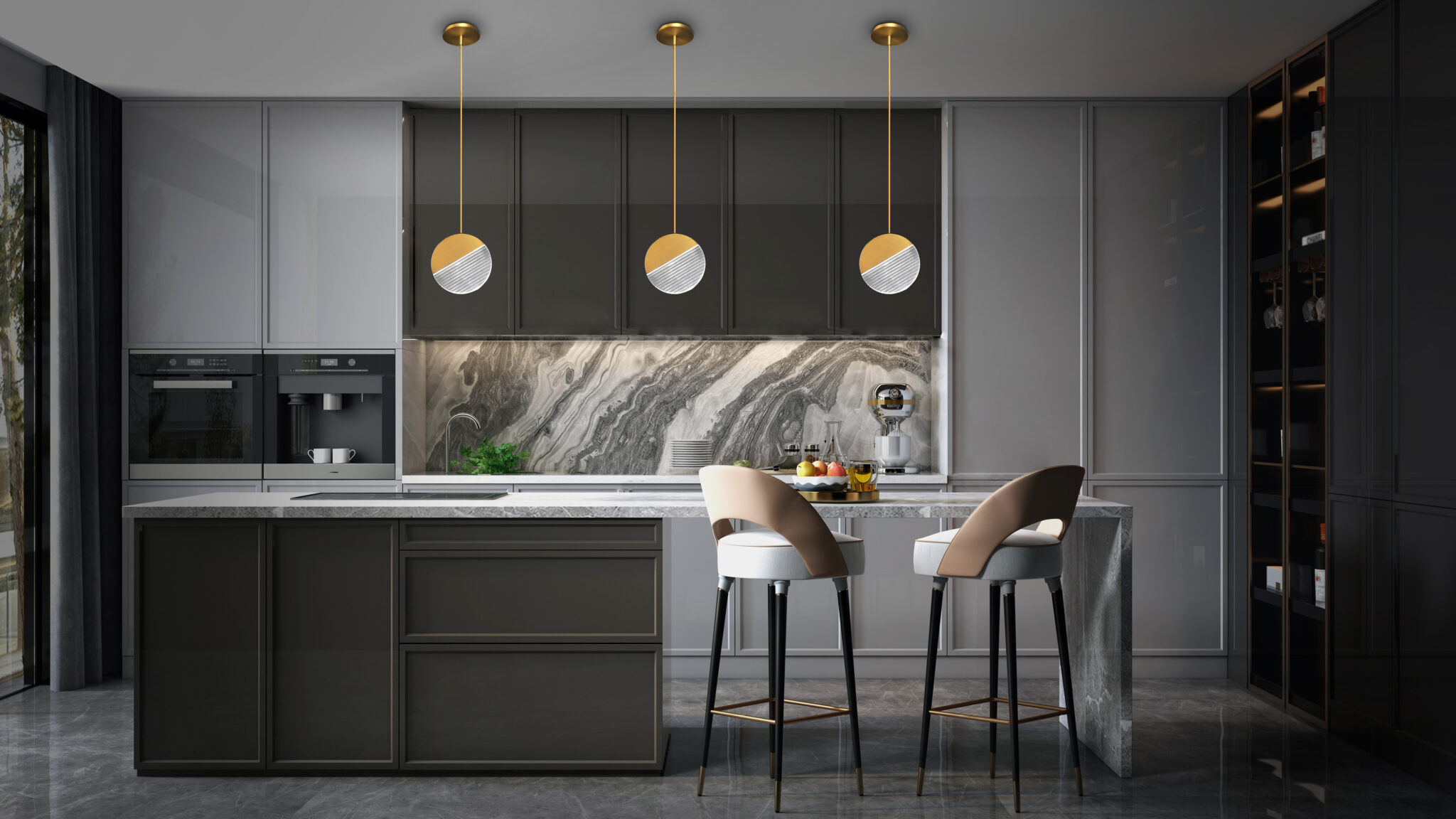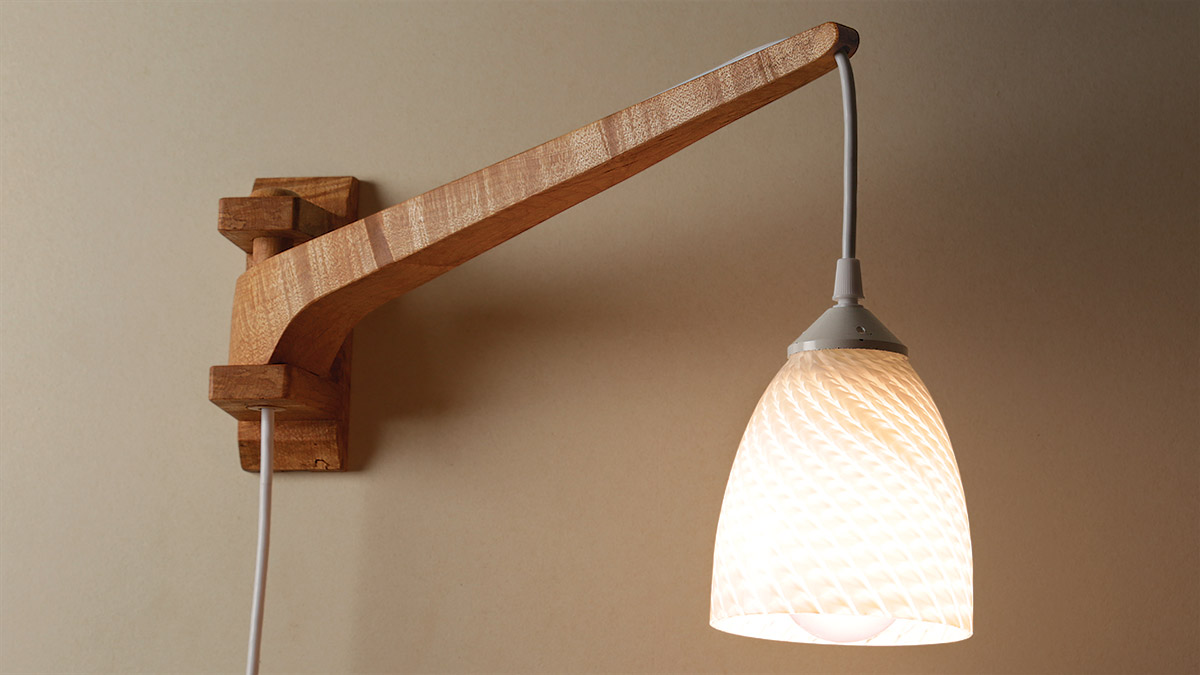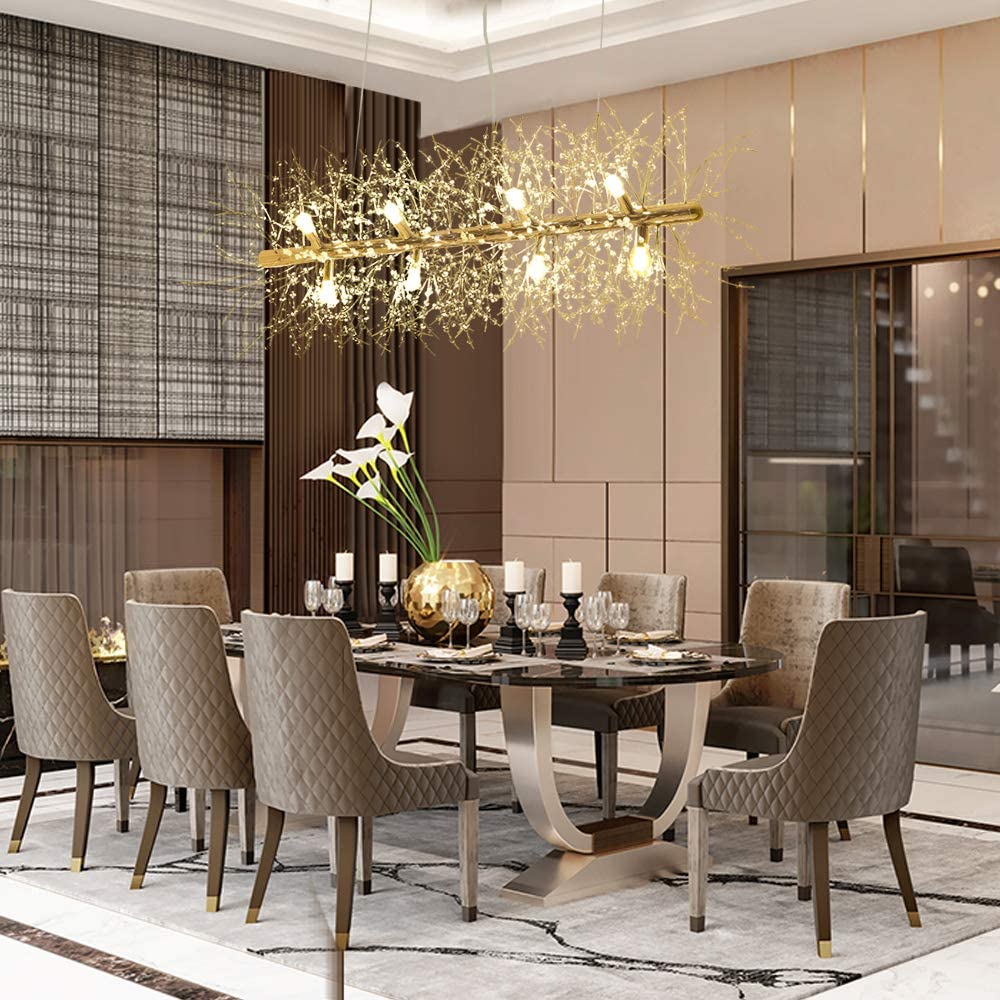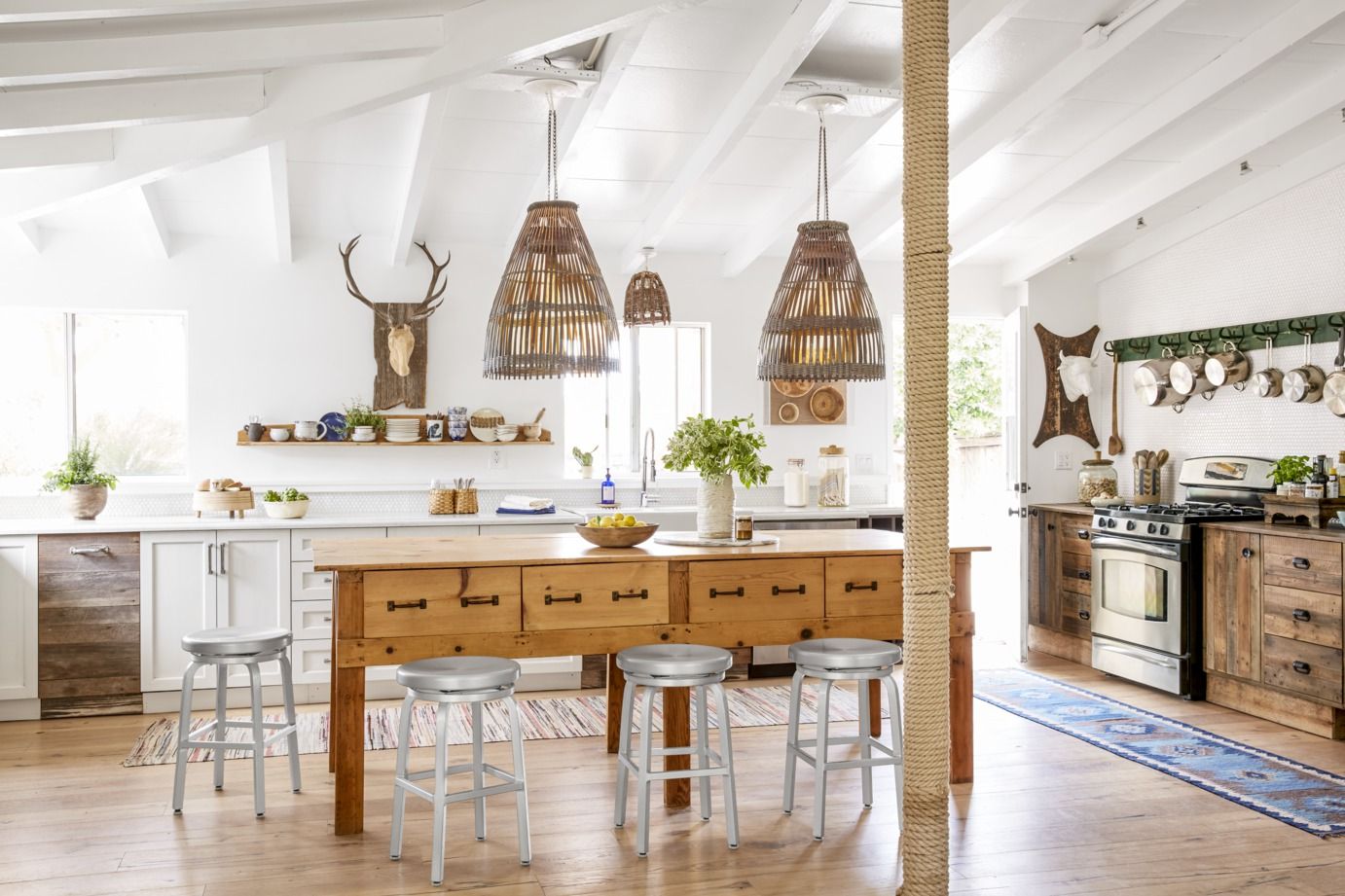Introduction: Why the 1950s Floor Lamp is Making a Huge Comeback in 2025
The 1950s floor lamp is no longer just a nostalgic throwback—it’s a trending interior design staple for 2025. With its sleek lines, atomic-age influence, and timeless elegance, the 1950s floor lamp seamlessly blends vintage charm with contemporary style. Whether you’re a mid-century modern enthusiast or simply looking to add character to your living room, this iconic lighting piece is a must-have.
Interior designers, influencers, and home decor blogs are all raving about the return of mid-century lighting. In fact, searches for terms like “retro floor lamp” and “1950s standing lamp” have surged, making this trend one to watch. But what makes the 1950s floor lamp so unique, and how can you integrate it into your space? Let’s dive into everything you need to know.
The Origin and Evolution of the 1950s Floor Lamp
A Design Revolution After WWII
The end of World War II marked a shift in design philosophies. People craved modernism, simplicity, and functionality. The 1950s floor lamp emerged as a practical yet artistic solution to lighting. With innovations in materials like brass, aluminum, and fiberglass, designers could now explore new forms and functions.
Influential Designers Behind the 1950s Floor Lamp
The golden age of floor lamps was shaped by visionary designers like:
George Nelson – Known for the Bubble Lamp and other space-age designs.
Greta Grossman – Introduced the Cobra Lamp, a floor lamp with organic curves.
Gerald Thurston – Created adjustable and swiveling floor lamps ideal for reading and ambiance.
These designers pioneered what we now cherish as classic 1950s floor lamp aesthetics—minimalism with flair.
Defining Characteristics of a 1950s Floor Lamp
Understanding the key elements that define a 1950s floor lamp is essential whether you’re looking to buy, collect, or style one in your space. These lamps were more than just functional pieces—they were artistic statements that captured the post-war optimism, technological advancement, and stylistic experimentation of the mid-century modern era. Let’s explore their defining traits in depth.
Iconic Materials That Defined the Era
One of the most distinguishing features of 1950s floor lamps is the material selection, which reflected both practicality and a fascination with the future.
Brass & Brushed Steel: Polished or antique-finish brass became a signature of the era, lending a warm, luxurious look to many lamps. Brushed steel was often used for a sleeker, industrial edge that suited urban interiors.
Wood Accents: Particularly teak and walnut, these woods added an organic contrast to the metallic bases and were favored in Scandinavian-influenced designs.
Fiberglass & Textured Plastics: Used mainly in lamp shades, these materials were lightweight and allowed for unique textures, patterns, and light diffusion.
Milk Glass & Opal Glass: Used for shades, these soft white materials emitted a warm glow and contributed to the ambient quality of the lamp.
These materials were chosen not only for aesthetics but for their availability and technological novelty post-WWII.
Distinctive Structural Design
The silhouette of a 1950s floor lamp is unmistakable and often tells you everything you need to know about its origins. Here are the most common structural attributes:
Slim, Vertical Forms: The lamps often featured tall, narrow poles to create an elegant, space-saving look—ideal for compact city apartments.
Tripod Bases: A hallmark of mid-century design, tripod bases provided both stability and a modern sculptural appearance.
Cantilevered Arms: Some lamps had extended arms that arched gracefully or adjusted horizontally, allowing for directional light—a precursor to task lighting trends.
Modular Joints and Swivel Heads: A major innovation of the time, allowing the user to reposition the light as needed. Designers like Gerald Thurston and Koch & Lowy popularized this functional yet stylish feature.
These designs emphasized form meeting function, which became a cornerstone of mid-century modernism.
Shade Styles and Light Diffusion Techniques
The lamp shade wasn’t just an accessory—it was a critical design component that influenced both the visual appeal and light quality of a 1950s floor lamp.
Drum Shades: These cylindrical shades were clean and minimal, aligning with the geometric preferences of the era. Often covered in linen or textured fabric.
Cone and Hourglass Shapes: Cone-shaped shades provided focused task lighting, often paired with articulating heads. Double cone or hourglass designs offered a striking sculptural look.
Fiberglass Parchment Shades: These shades were often speckled or laced with embedded threads, producing a warm, ambient glow and a distinct retro aesthetic.
UFO or Saucer Shades: Popularized by George Nelson, these flying-saucer-shaped shades embodied the atomic age and space race influence of the 1950s.
Multi-Shade Designs: Some floor lamps featured two or three arms, each with its own small shade, allowing for varied lighting angles and decorative layering.
These shade choices made each lamp feel like a unique piece of functional art.
Colors and Finishes That Captured the Era
Color played a significant role in the design identity of 1950s floor lamps. Designers weren’t afraid to play with vibrant hues or combine earth tones with metallics.
Muted Pastels: Soft greens, pale yellows, powder blues, and blush pinks were frequently used, particularly in fiberglass or painted metal shades.
Primary Pops: For bolder interiors, colors like red, mustard, and teal added contrast and visual interest.
Matte Black & Antique Brass: This combination added a timeless sophistication and became a staple in more upscale or masculine spaces.
Chrome & Nickel Finishes: Sleek and futuristic, these finishes hinted at the influence of automotive and industrial design in home decor.
The palette reflected both the playfulness and forward-looking optimism of the 1950s postwar economy.
Functional Innovation Ahead of Its Time
The functionality of 1950s floor lamps was ahead of its time. Rather than static pieces, these lamps were designed to adapt to user needs.
Adjustable Heights: Some models could extend or retract vertically to suit various seating arrangements or lighting requirements.
Swiveling Arms and Pivoting Heads: These features allowed directional lighting for reading, crafting, or ambiance.
Three-Way Switches: Provided multiple light settings for mood customization—a feature that modern lighting would later adopt widely.
Bulb Variety: Though incandescent bulbs were standard, many designers experimented with halogen or reflector bulbs to control brightness and spread.
These innovations gave the user a sense of control over their environment—aligning with the broader cultural push toward convenience and personal comfort.
Artistic Forms and Influences
The 1950s were heavily influenced by movements such as Bauhaus, Scandinavian modernism, and Atomic Age futurism. These ideologies manifested clearly in floor lamp designs.
Atomic Style: Lamps featured boomerang shapes, sputnik arms, and abstract motifs.
Organic Modernism: Smooth, flowing lines and biomorphic shapes echoed the natural world.
Geometric Precision: Straight lines, perfect spheres, and balanced symmetry showcased a machine-inspired aesthetic.
Every detail was deliberate, making the 1950s floor lamp not just a source of light—but a piece of art.
Why the 1950s Floor Lamp is Trending in 2025
Mid-Century Modern Revival
Mid-century modern isn’t just a buzzword—it’s a design philosophy. Its principles of clean lines, functionality, and understated elegance align perfectly with modern minimalist living. The 1950s floor lamp fits right into this aesthetic.
Sustainable and Eco-Friendly Trends
People are turning to vintage and upcycled items to reduce waste. Buying or restoring a 1950s floor lamp is not only stylish but also sustainable.
Instagram-Worthy Design
Social media platforms like Instagram and Pinterest have popularized the mid-century modern look. A well-placed 1950s floor lamp becomes a focal point in posts, reels, and home tour content.
How to Identify an Authentic 1950s Floor Lamp
Check for Manufacturer Labels
Brands like Lightolier, Arredoluce, and Laurel often tagged their lamps. Look near the base or inside the shade.
Material Quality and Weight
Vintage floor lamps from the 1950s were made with heavy metals and solid wood. If it feels lightweight or overly shiny, it might be a replica.
Wiring and Bulb Fittings
Original 1950s lamps may have cloth wiring or European-style bulb fittings. Be cautious and consider rewiring for safety.
Top 10 1950s Floor Lamp Styles to Look For
The Sputnik Lamp – Space-age design with multiple arms.
The Arco Lamp – Long arc design with a marble base.
Tripod Floor Lamp – Three-legged stability with a conical shade.
Adjustable Reading Lamp – Designed for form and function.
Mushroom Lamp – Dome-shaped top, often made of acrylic.
Brass Swing Arm Lamp – A classic with pivoting functionality.
Cobra Floor Lamp – Sleek, snake-like appearance.
Globe-Shade Lamp – Spherical shade for diffused light.
Atomic Z-Lamp – With sharp Z-curve structure.
Double Headed Lamps – Perfect for shared spaces or task lighting.
How to Incorporate a 1950s Floor Lamp in Modern Decor
Living Room Accent
Place a 1950s floor lamp beside a vintage armchair to create a stylish reading nook.
Bedroom Ambience
Use it in the corner for ambient lighting that complements mid-century dressers and platform beds.
Office and Study
Choose an adjustable model with directional heads to blend utility with aesthetics.
Buying Guide: Where to Find 1950s Floor Lamps
Online Marketplaces
1stDibs – High-end vintage options.
Etsy – Artisan and vintage sellers with unique finds.
eBay – Great for hunting authentic deals if you know what to look for.
Local Antique Stores and Estate Sales
Visit vintage shops or estate auctions. You may uncover an original 1950s floor lamp at a fraction of the online price.
Reproduction Retailers
Stores like West Elm or Article offer mid-century inspired lamps if originals aren’t available.
Maintenance Tips for Vintage 1950s Floor Lamps
Owning a vintage 1950s floor lamp is both a design privilege and a responsibility. These mid-century masterpieces require regular upkeep to ensure they stay safe, functional, and visually stunning. Whether you’re displaying an original Gerald Thurston design or a fiberglass-shaded tripod lamp, maintaining your 1950s floor lamp preserves its aesthetic and historical value.
Below are detailed and practical maintenance tips to keep your lamp shining—literally and figuratively.
Inspect Electrical Components Regularly
Vintage lamps were built before modern safety standards, so the first maintenance step is to ensure safe operation.
Check the Wiring: Older lamps often have cloth-covered cords that can fray or crack over time. If the wiring is stiff, brittle, or frayed, replace it immediately. Avoid using vintage lamps with original cords until rewired.
Rewire When Needed: If you’re unsure about the condition, consult a licensed electrician or a lighting restoration expert. Rewiring doesn’t impact the lamp’s value as long as the integrity of the design is maintained.
Examine the Plug: Look for signs of rust, corrosion, or loose prongs. Replace with a polarized plug if necessary to meet modern electrical codes.
Check the Socket: Sometimes the bulb socket loosens or rusts over time. If your bulb flickers or doesn’t sit properly, the socket might need replacing.
💡 Pro tip: Always unplug the lamp before doing any inspection or cleaning.
Clean Brass and Metal Surfaces Gently
1950s floor lamps often feature beautiful brass, chrome, or brushed steel components. However, improper cleaning can damage these surfaces.
For Brass: Use a non-abrasive brass polish like Brasso or a vinegar-lemon-salt mix to restore shine. Test any cleaner on a small area first. Avoid harsh scrubbing or steel wool, which can scratch or remove patina.
For Chrome: A soft cloth dampened with mild dish soap and warm water works well. For rust spots, use a tiny bit of aluminum foil dipped in vinegar and gently rub.
For Painted Metal: Wipe with a damp microfiber cloth. Avoid solvent-based cleaners, which can damage original paint.
✨ Retaining natural patina often adds to the value and authenticity of your 1950s floor lamp.
Preserve and Restore Lamp Shades
Lamp shades are often the most delicate part of a vintage floor lamp. Whether fiberglass, fabric, or parchment, they need special care.
Dust Regularly: Use a soft feather duster or compressed air to remove dust from crevices and edges. This prevents dirt buildup that can lead to discoloration.
Clean Fiberglass Shades: Wipe gently with a slightly damp cloth and let it air dry. Avoid soap, which can leave residues.
Fix Discoloration or Stains: Light discoloration can sometimes be reversed using a baking soda paste on fiberglass, but test on an inconspicuous area first.
Replace with Replicas: If the original shade is too damaged, consider replacing it with a period-accurate reproduction. Several restoration shops and sellers on platforms like Etsy specialize in vintage fiberglass shades.
Maintain Wooden Accents
Some 1950s floor lamps include Scandinavian-inspired wooden elements such as teak, walnut, or rosewood.
Dust Weekly: Use a soft microfiber cloth to gently dust wood surfaces.
Polish Sparingly: Use a high-quality wood conditioner or oil, like Danish oil, every few months to maintain richness and prevent cracking.
Avoid Harsh Chemicals: Stay away from bleach or ammonia-based products which can damage vintage finishes.
Protect the Lamp from Environmental Damage
Environmental conditions can significantly affect the longevity and appearance of your 1950s floor lamp.
Avoid Direct Sunlight: UV exposure can fade paint, fabrics, and fiberglass. Place lamps out of direct sunlight or use UV-filtering curtains.
Control Humidity: High moisture levels can corrode metal parts or warp wood. Use a dehumidifier in damp climates or basements.
Keep Away from Heat Sources: Avoid placing lamps near radiators or heat vents, which can dry out wooden parts and make metal brittle over time.
🔥 Ideal storage and placement conditions are similar to those for preserving fine furniture or antiques.
Bulb Choices for Vintage Lamps
Using the right bulb is both a functional and aesthetic consideration when it comes to maintaining your lamp.
LED Filament Bulbs: These offer the vintage look of Edison bulbs while remaining energy efficient and cool to the touch.
Warm White (2700K): Mimics the soft, warm glow typical of mid-century lighting and flatters the lamp’s original shade colors.
Avoid Overheating: Check the lamp’s wattage limits. Too high a wattage can damage older sockets and shades.
Storing Your Lamp Safely
If you’re not displaying your lamp year-round, proper storage is crucial.
Disassemble Carefully: If possible, remove the shade and base components and wrap them individually in bubble wrap or cloth.
Label Parts: If your lamp has screws, rods, or specialty fittings, label or photograph them for easy reassembly.
Store Upright: Keep the lamp in a vertical position in a dry, temperature-controlled environment to prevent warping or distortion.
When to Seek Professional Restoration
Sometimes, professional help is the best option—especially if your 1950s floor lamp has:
Non-functioning wiring and you lack electrical knowledge.
Rare or collectible value, and restoration could impact resale price.
Broken components that require vintage parts or custom fabrication.
Seek out licensed lighting restoration services with experience in mid-century modern design. They’ll understand how to preserve your lamp’s authenticity while improving its safety and usability.
Preserve the Past, Illuminate the Present
Maintaining a 1950s floor lamp is not just about preserving a piece of furniture—it’s about safeguarding a slice of design history. With regular care and mindful maintenance, your lamp can remain a glowing centerpiece for generations. Whether you’re an antique collector or simply someone who appreciates timeless design, following these tips will ensure your vintage lamp continues to shine—both literally and as a cherished style statement.
DIY Restoration Tips
Clean with Care
Always start with a microfiber cloth and non-abrasive cleaners.
Replace Fabric Shades
You can source replica fiberglass or linen shades to stay period-accurate.
Rewire for Safety
Hire an electrician to bring the lamp up to modern safety standards without compromising its vintage appeal.
Investment Value of a 1950s Floor Lamp
Increasing Demand
As interior trends evolve, the value of authentic vintage pieces has risen. A well-maintained 1950s floor lamp can appreciate over time.
Rarity and Provenance
Items with original tags or tied to renowned designers fetch premium prices.
Common Mistakes to Avoid When Buying or Using a 1950s Floor Lamp
Don’t assume every vintage lamp is valuable—research the designer and era.
Avoid overly restored pieces that lose originality.
Don’t mix too many mid-century elements—balance is key to a cohesive design.
FAQs About 1950s Floor Lamps
Are 1950s floor lamps energy efficient?
Not originally, but you can use LED retro-style bulbs to improve efficiency.
What’s the difference between mid-century modern and retro?
Mid-century modern refers to a specific era (1945–1969), while retro is more broadly applied to any vintage-inspired design.
Can I use a 1950s floor lamp in a minimalist home?
Absolutely. The clean lines and functional design of a 1950s floor lamp make it ideal for minimalist aesthetics.
Conclusion: Timeless Style Meets Modern Functionality
The 1950s floor lamp is more than just a lighting fixture—it’s a piece of design history. With its sleek lines, quality materials, and iconic forms, this lamp style stands out in any home. Whether you’re curating a vintage vibe or looking for a standout accent, a 1950s floor lamp delivers on both form and function.
Looking to build a cohesive vintage lighting theme? Check out our Different Types of Lighting Fixtures for a Cozy Home for inspiration on mixing floor lamps with pendant lights, sconces, and chandeliers.

